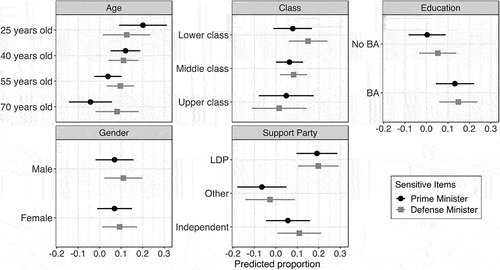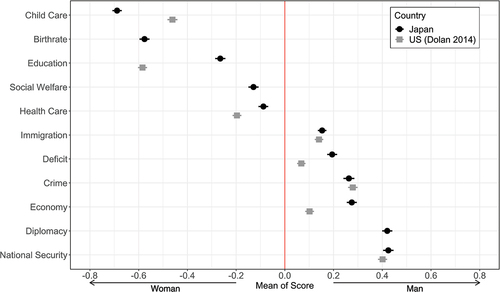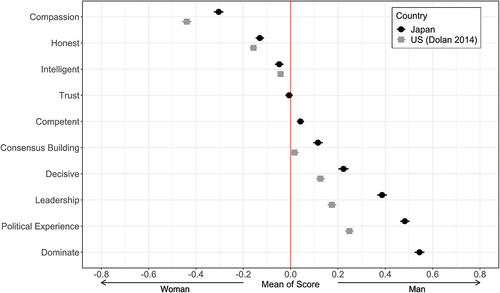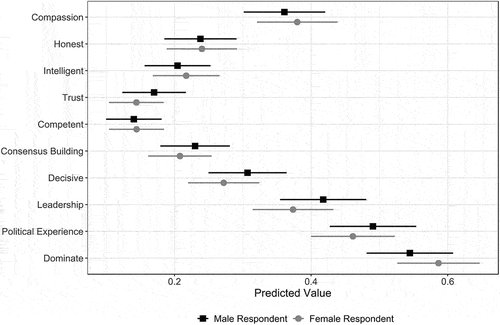Figures & data
Figure 1. Multivariate Estimates of Opposition to Women Political Leaders.

Figure 2. Policy Stereotypes Among Japanese and American Voters.

Figure 3. Personal Trait Stereotypes Among Japanese and American Voters.

Table 1. Results of Logistic Regression on Gender Stereotypes Toward Policy Issue Domains.
Table 2. Results of Logistic Regression on Gender Stereotypes Toward Personality Traits.
Table A1. Summary Statistics of Respondent Attributes.
Table C1. Univariate Results of List Experiment.
Table C2. Estimated Coefficients from the Regression Models.
Figure F1. Policy Domain Stereotypes by Respondents’ Gender

Figure F2. Personality Trait Stereotypes by Respondent Gender

